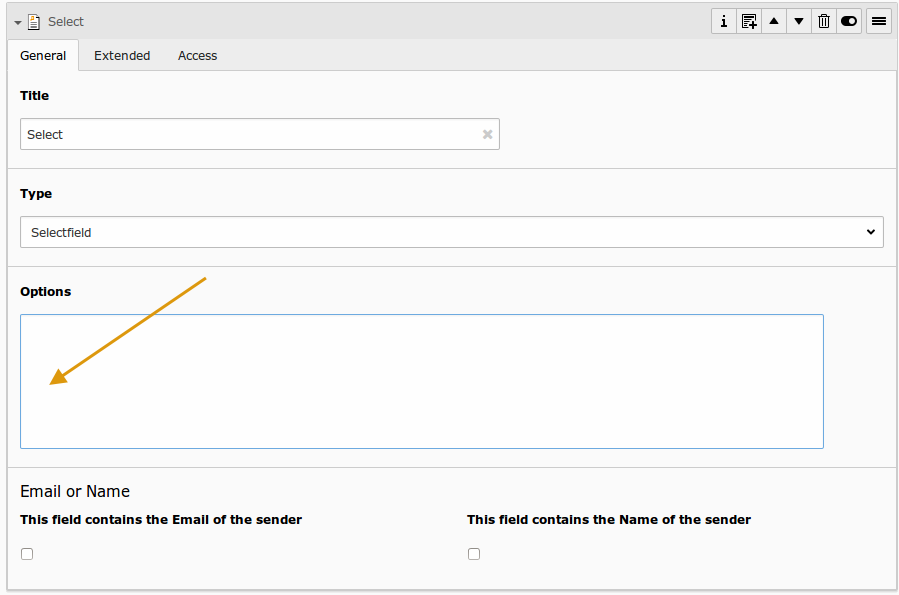Prefill or preselect a field
The standard way
Prefilling (input, textarea, hidden) or preselecting (select, check, radio) of fields will be done by the PrefillFieldViewHelper. It listen to the following methods and parameters (in this ordering):
1. GET/POST param like &tx_powermail_pi1[field][marker]=value
NOTE: If you want to a get parameter to prefill a form field, you need to exclude this parameter in [FE][cacheHash][excludedParameters], otherwise you will create 404 request, if [FE][pageNotFoundOnCHashError] is enabled (what should be enabled for security reasons!)
Example part in the LocalConfiguration.php:
'FE' => [
'cacheHash' => [
'excludedParameters' => [
'L',
'utm_source',
'utm_medium',
'utm_campaign',
'utm_term',
'utm_content',
'tx_powermail_pi1[field][marker]',
]
]
],
2. If field should be filled with values from FE_User (see field configuration)
3. If field should be prefilled from static Setting (see field configuration)
4. Fill with TypoScript cObject like
plugin.tx_powermail.settings.setup.prefill {
# Fill field with marker {email}
email = TEXT
email.value = mail@domain.org
}
5. Fill with simple TypoScript like
plugin.tx_powermail.settings.setup.prefill {
# Fill field with marker {email}
email = mail@domain.org
}
6. Fill with your own PHP with a EventListener.
Look at In2code\Powermail\ViewHelpers\Misc\PrefillFieldViewHelper::render()
Example markup

Generating select options out of TypoScript
You can dynamicly generate a select (or radio-buttons or checkboxes) field in powermail with some lines of TypoScript. To use this feature, you have to leave the field "Options" empty and you should fill the field "Create from TypoScript" with a TypoScriptObjectPath. See the following example:


Example 1
After this, you can define your TypoScript setup:
lib.options = TEXT
lib.options.value = red[\n]blue[\n]pink
This will result in a HTML like:
<select ...>
<option>red</option>
<option>blue</option>
<option>pink</option>
</select>
Example 2
You can also define it with different labels and values:
lib.options = TEXT
lib.options.value = Red shoes|red[\n]Blue shoes|blue|*[\n]Pink shoes|pink
This will result in a HTML like:
<select ...>
<option value="red">Red shoes</option>
<option value="blue" selected="selected">Blue shoes</option>
<option value="pink">Pink shoes</option>
</select>
Example 3
Or maybe the visitor should select a category from table sys_category:
lib.options = CONTENT
lib.options {
table = sys_category
select.pidInList = 156
renderObj = COA
renderObj {
10 = TEXT
10.field = title
20 = TEXT
20.value = |
30 = TEXT
30.field = uid
stdWrap.wrap = |[\n]
}
}
This will result in a HTML like:
<select ...>
<option value="23">Category 1</option>
<option value="24">Category 1</option>
<option value="25">Category 1</option>
</select>
